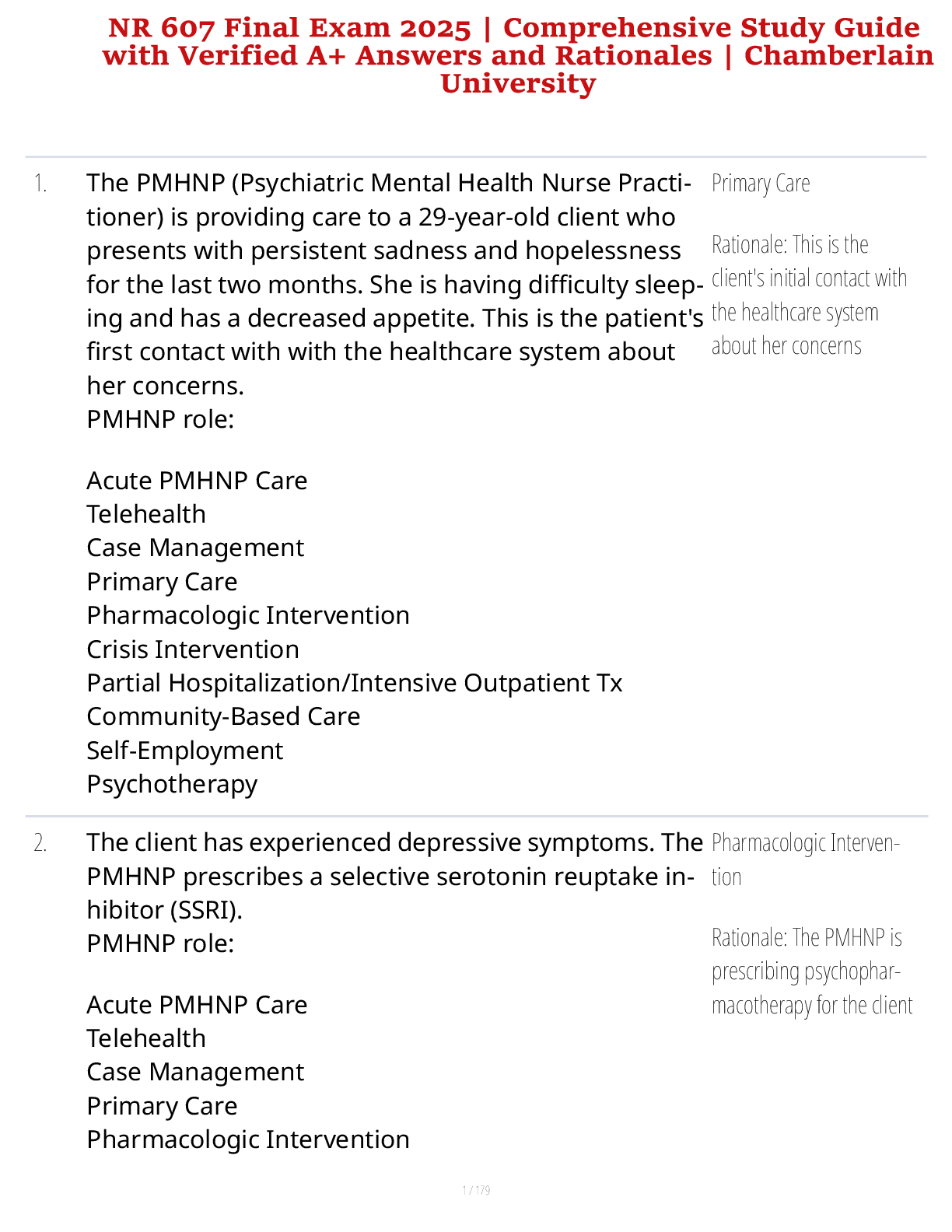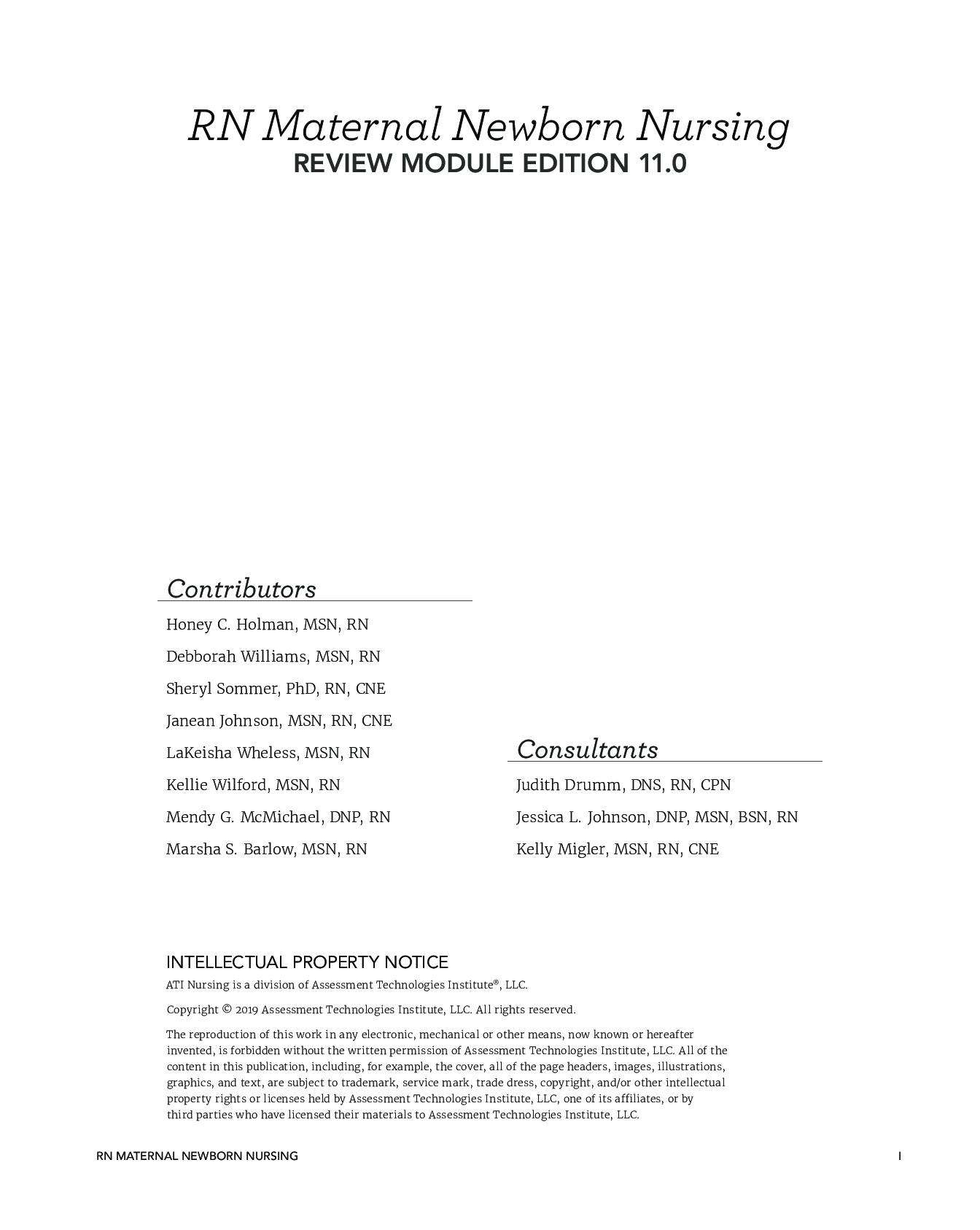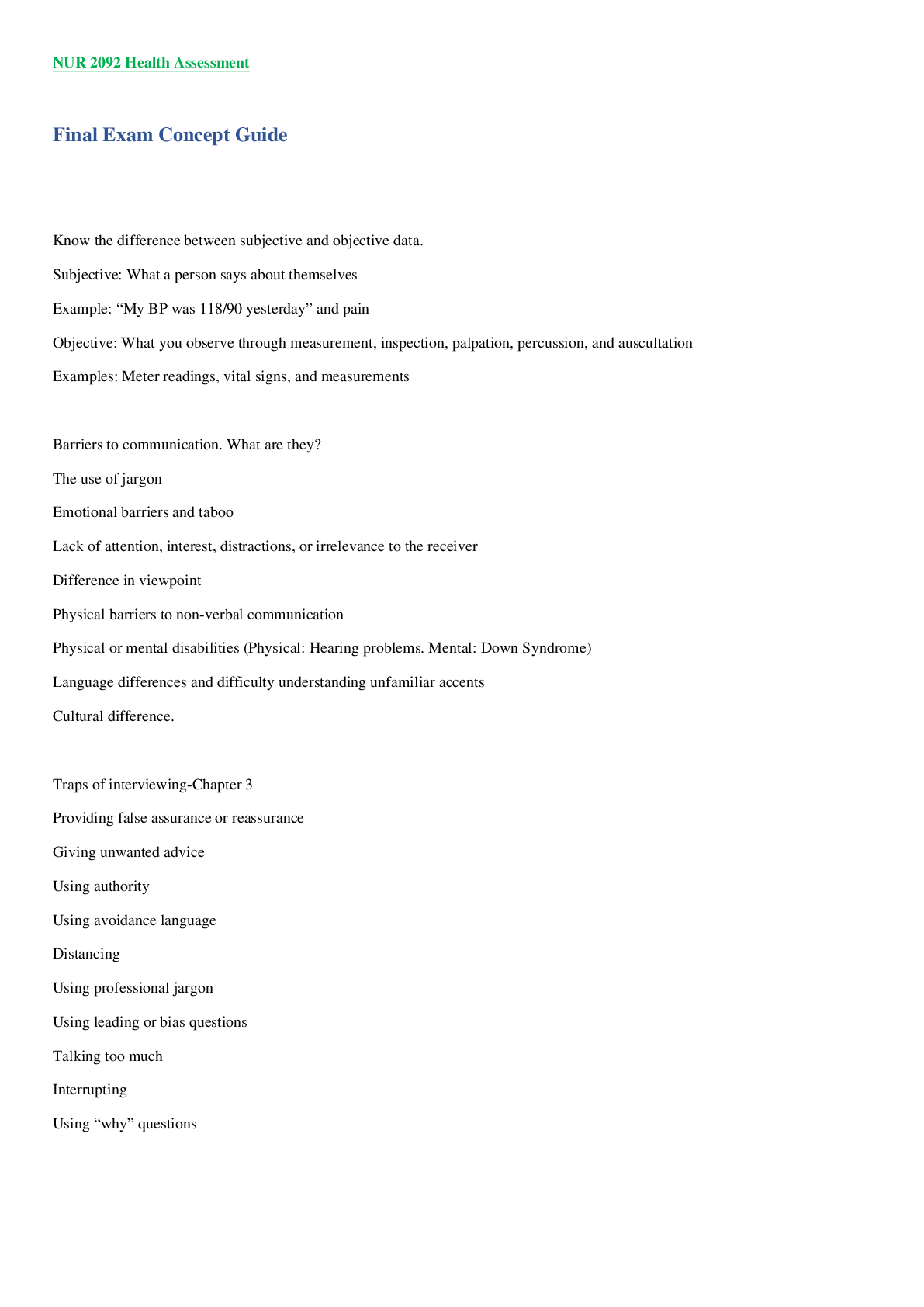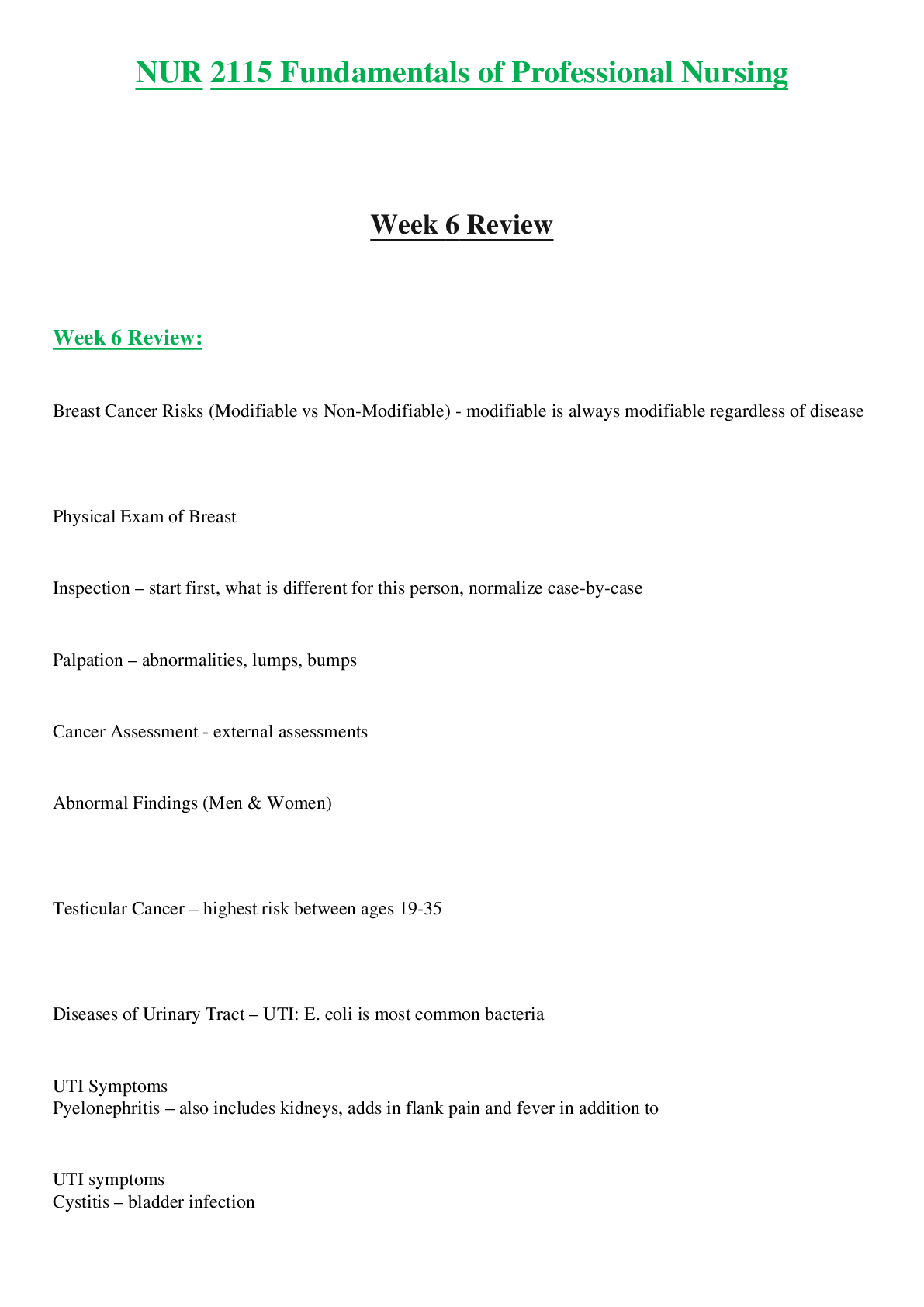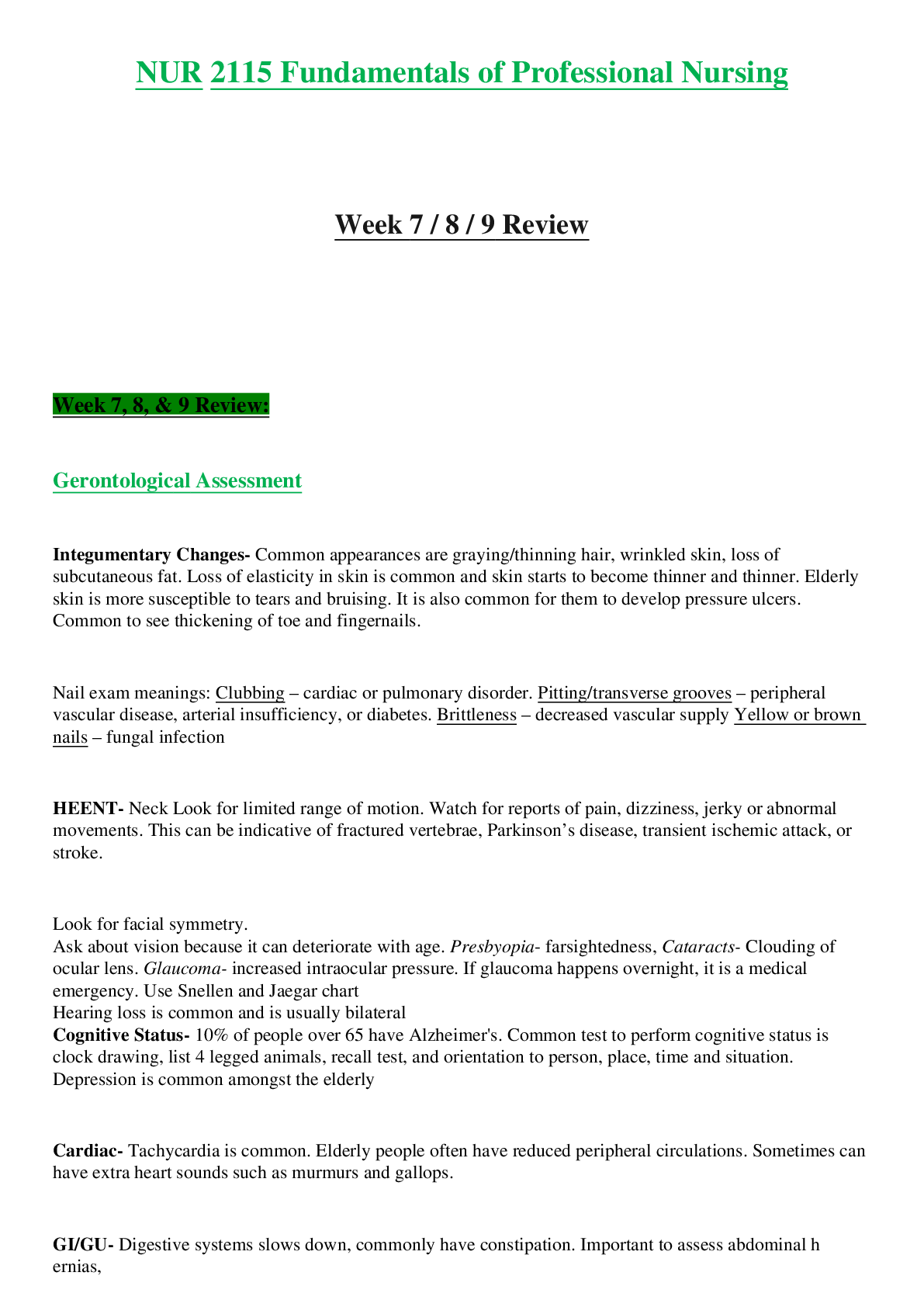*NURSING > STUDY GUIDE > Chapter 36 Pulmonary alterations in children (All)
Chapter 36 Pulmonary alterations in children
Document Content and Description Below
Chapter 36 Pulmonary alterations in children Alterations of respiratory function in children are influenced by age, development, gender, race, genetic dominance, and environmental conditions. N ... ewborns, premature newborns in particular, are especially vulnerable to a variety of upper and lower airway infections caused by immaturity of the airways, circulation, chest wall, and the immune system. Structural differences in infants and children also render them less competent to tolerate conditions that cause increased work of breathing. Access to health care and timeliness of immunizations influence the incidence and severity of pulmonary disorders. Structure and Function A number of structural characteristics of the pulmonary system influence the way in which infants and children respond to respiratory disturbances. These include structural characteristics of the upper and lower respiratory tracts, chest wall and lung dynamics, metabolic requirements, immunologic immaturity, and physiologic control of respiration. Upper Airway All conducting airways (the portions of airway that do not participate in gas exchange) are present at birth and change only in size throughout childhood. Branching of the bronchial tree is in fact complete by the sixteenth week of fetal life. Because infants and children naturally have smaller-diameter airways than adults, they suffer more obstruction for a given degree of mucosal edema or secretion accumulation. The relative sizes of tonsils, adenoids, and epiglottis likewise are proportionately greater in the young child and with swelling can impose a significant site of obstruction. Infants up to 2 to 3 months of age are “obligatory nose breathers” and are unable to breathe in through their mouths. Nasal congestion is therefore a serious threat to a young infant. Lower Airways and Lung Parenchyma During fetal development the lung is transformed from a somewhat dense organ to one that is more delicately structured to facilitate air exchange. Beginning in the second trimester, there is loss of interstitial (mesenchymal) tissue with concomitant expansion of the future air spaces. Capillaries grow into the distal respiratory units that keep subdividing (alveolarization) to maximize surface area for gas exchange. The number of alveoli continues to increase during the first 5 to 8 years of life, after which the alveoli increase in size and complexity. In addition to the structural development of the lung in utero, there is accompanying functional maturation during which specialized cell types, such as type II cells, manifest. (Figure 36-1 contains a summary of alveolar development and stages of fetal lung development.) FIGURE 36-1 Prenatal Development of the Alveolar Unit and Stages of Lung Development. A, Epithelial cells differentiate into type II and type I cells. Mature type II cells are cuboidal, have apical microvilli, and contain lamellar bodies for surfactant storage and secretion. Type I cells are derived from type II cells ...................................................................................continued.......................................................................................... [Show More]
Last updated: 3 years ago
Preview 1 out of 73 pages

Buy this document to get the full access instantly
Instant Download Access after purchase
Buy NowInstant download
We Accept:

Reviews( 0 )
$12.50
Can't find what you want? Try our AI powered Search
Document information
Connected school, study & course
About the document
Uploaded On
Jul 17, 2021
Number of pages
73
Written in
All
Additional information
This document has been written for:
Uploaded
Jul 17, 2021
Downloads
0
Views
119


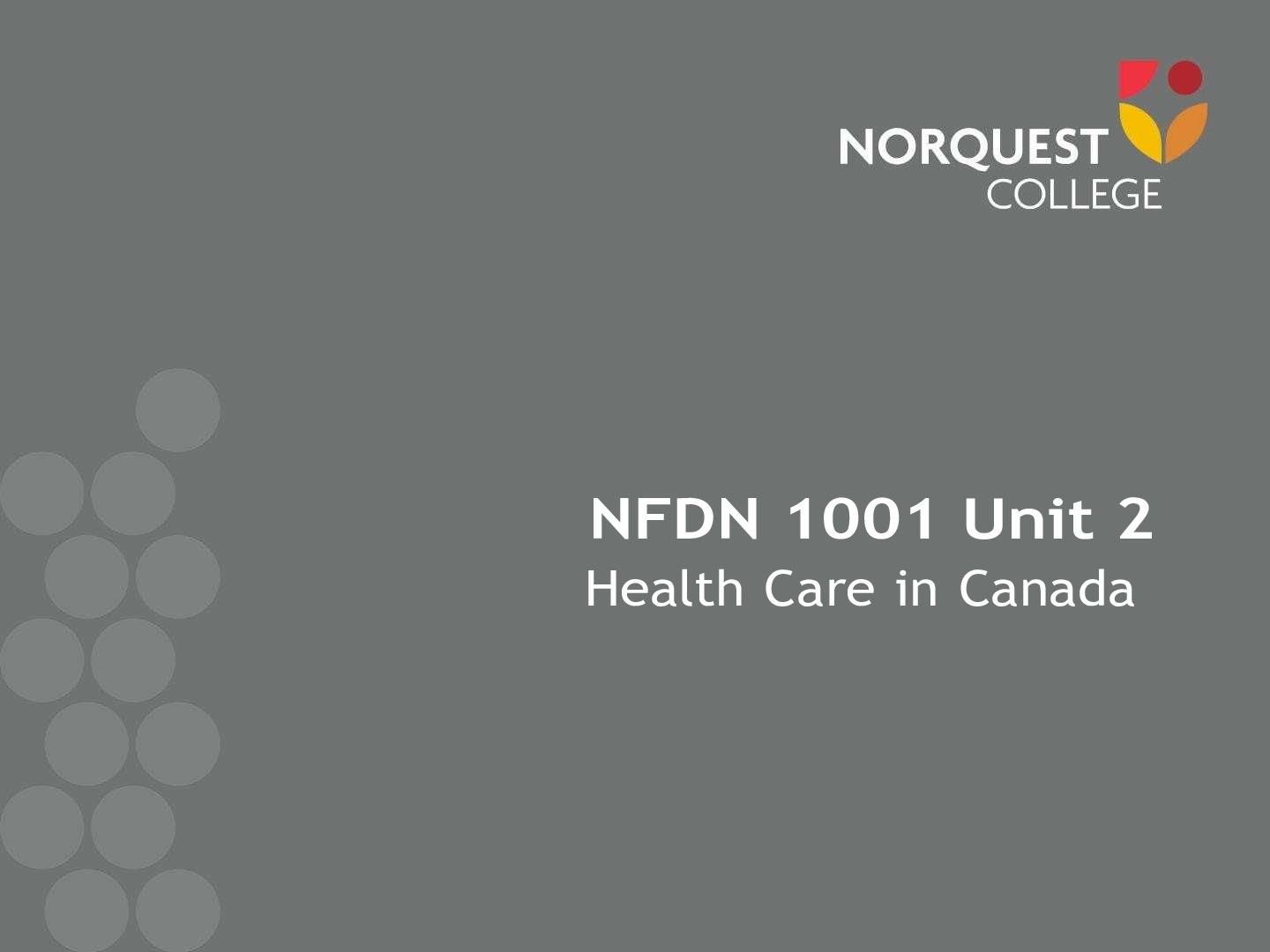


.png)
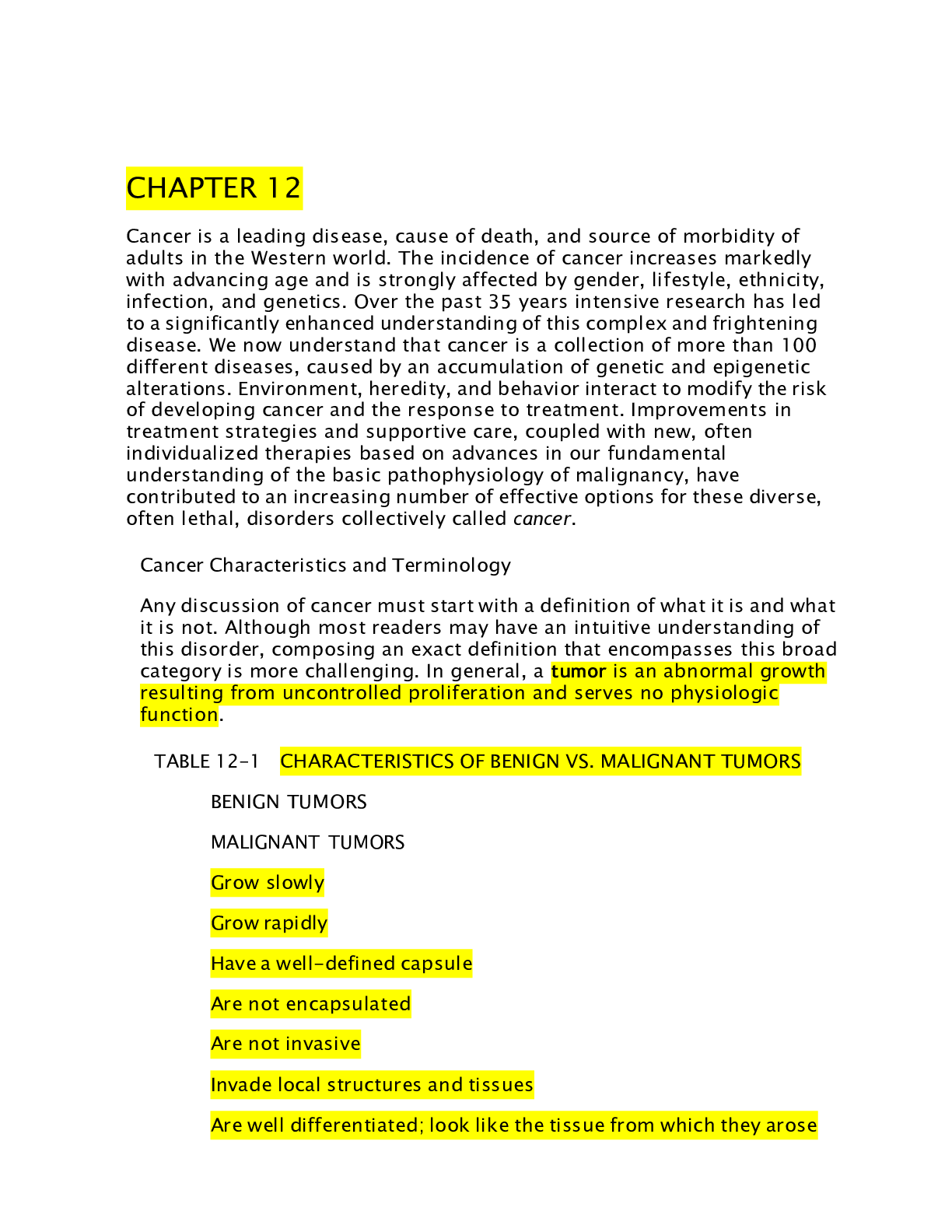
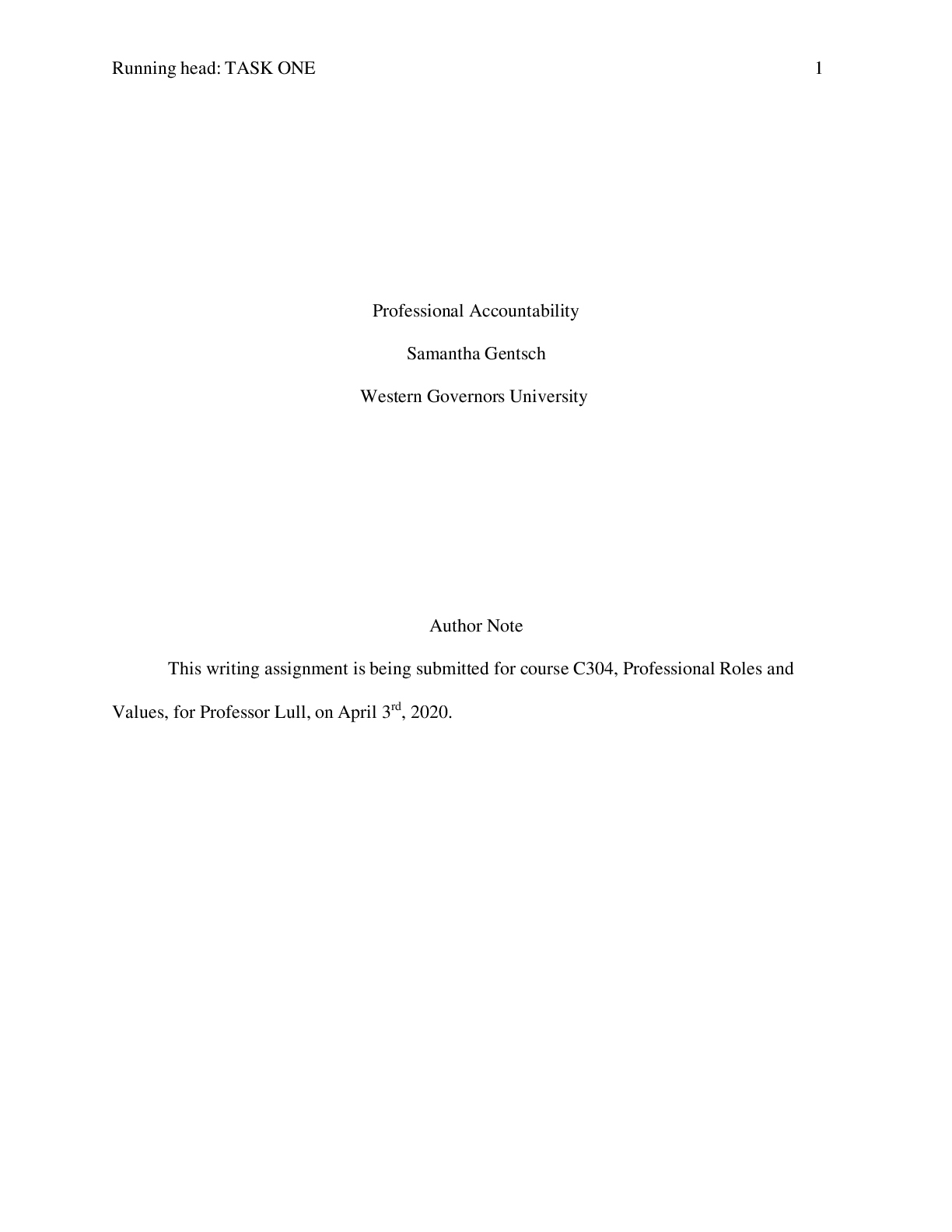
.png)


